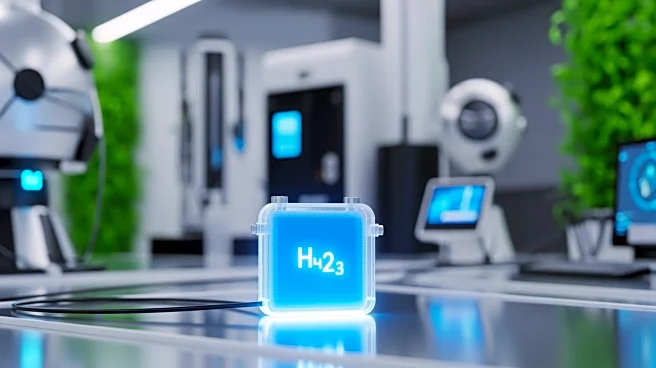What's Happening?
Researchers at City University of Hong Kong have made a significant breakthrough in green hydrogen technology by developing a new type of cathode that can efficiently split water into hydrogen and oxygen,
even under fluctuating power levels. This innovation addresses the challenges posed by the inconsistent power output of renewable energy sources like solar and wind. The new system, which uses abundant ocean water and renewable electricity, features a self-healing protective layer that extends the life of electrolyzers, crucial for converting renewable energy into storable hydrogen fuel. The technology has been tested to remain stable for over 10,000 hours and requires fewer expensive materials, making it more viable for commercial use.
Why It's Important?
This development is crucial as it offers a cleaner alternative to traditional hydrogen production methods that rely on fossil fuels. By utilizing seawater and renewable electricity, the technology could significantly reduce pollution and smog-forming emissions, contributing to cleaner air and a cooler planet. The ability to generate green hydrogen at an industrial scale could transform various sectors, including transportation and manufacturing, by providing a sustainable energy source. This advancement also lays the groundwork for more resilient systems in other clean technologies, such as carbon capture and fuel synthesis, potentially accelerating the transition to a more sustainable energy landscape.
What's Next?
If developed at scale, this technology could make clean hydrogen a feasible replacement for fossil fuels in various applications, from shipping to home heating. This would enhance energy independence for cities and companies while protecting human health by reducing emissions. The research provides a roadmap for overcoming energy inconsistency issues in future clean technologies, potentially leading to broader adoption and innovation in the green hydrogen industry.
Beyond the Headlines
The breakthrough not only addresses technical challenges but also has broader implications for energy policy and environmental sustainability. By reducing reliance on fossil fuels, the technology could influence regulatory frameworks and encourage investment in renewable energy infrastructure. Additionally, the development of such technologies could foster international collaboration in the fight against climate change, as countries seek to meet global emissions targets and transition to cleaner energy sources.











